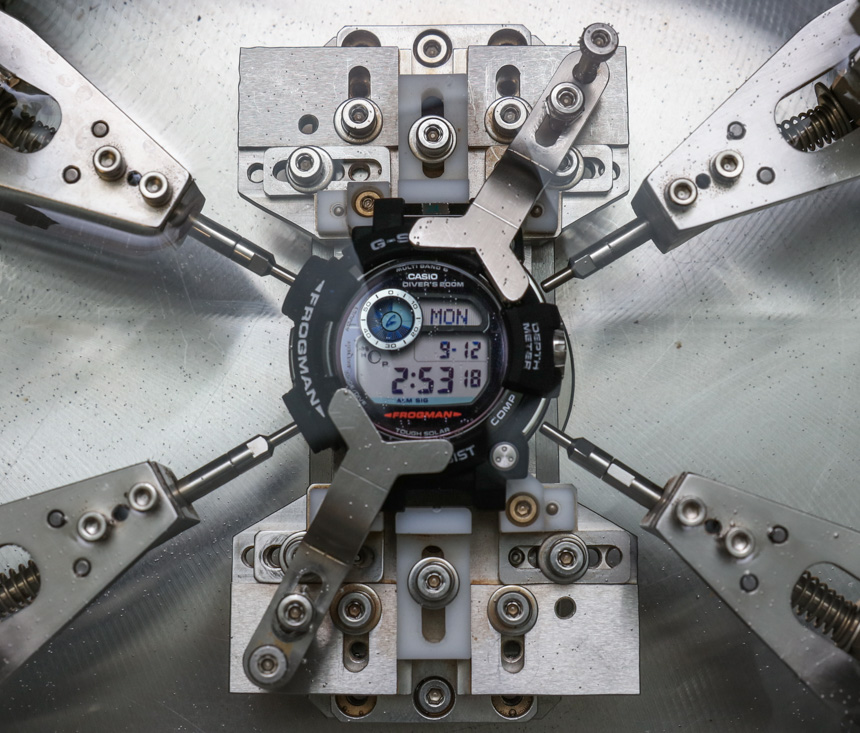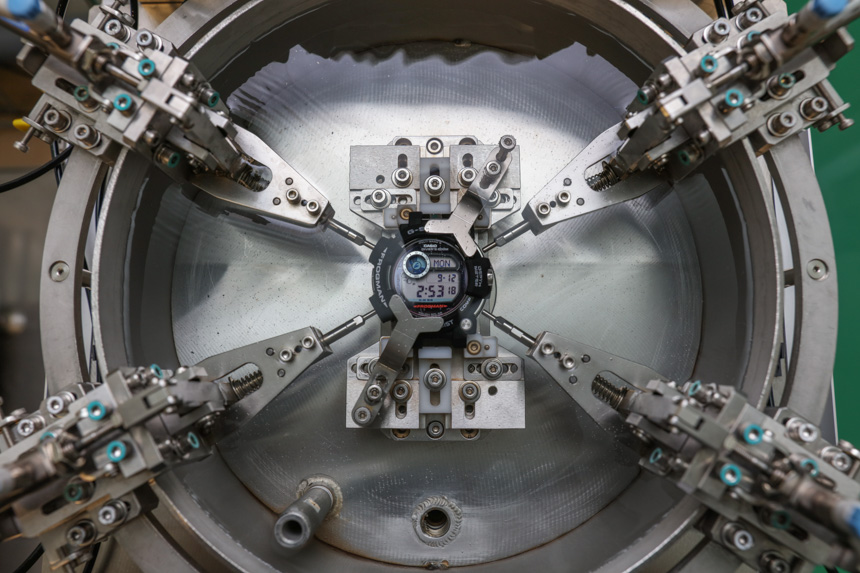
Let’s talk about G-Shock and other premium Casio watch production. Not all Casio watches are produced inside of Japan even if they are designed here. All three of the major Japanese watch companies – Seiko, Citizen, and Casio – have most of their volume products produced in other parts of Asia (such as Thailand), but with more high-end premium models produced inside of Japan. Within domestic production there is further differentiation of quality. For instance, at Casio, they have a “PPL” (“Premium Production Line) room where the company’s absolute top products are made with an incredibly impressive level of care and production refinement.
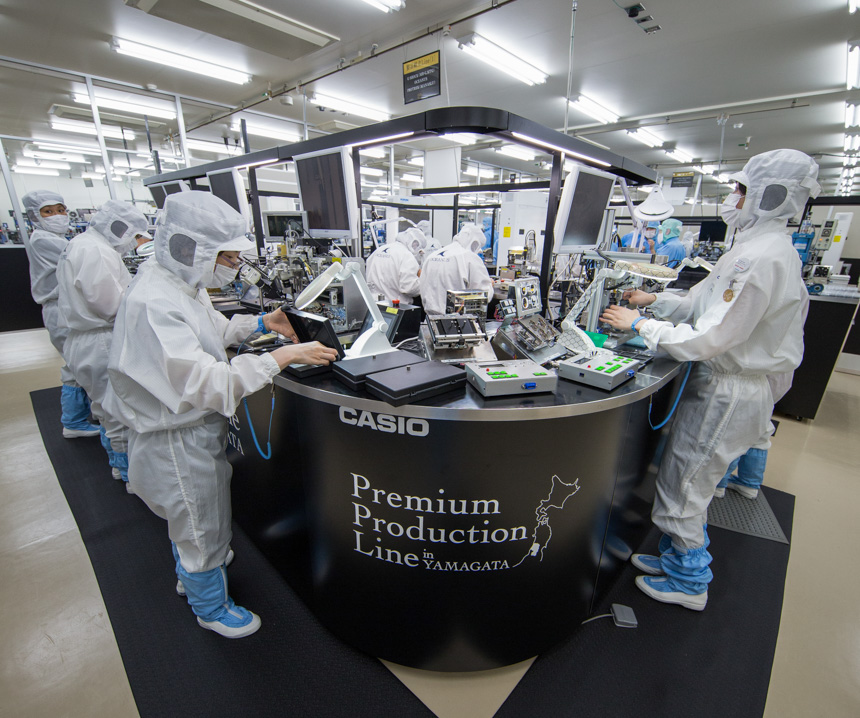
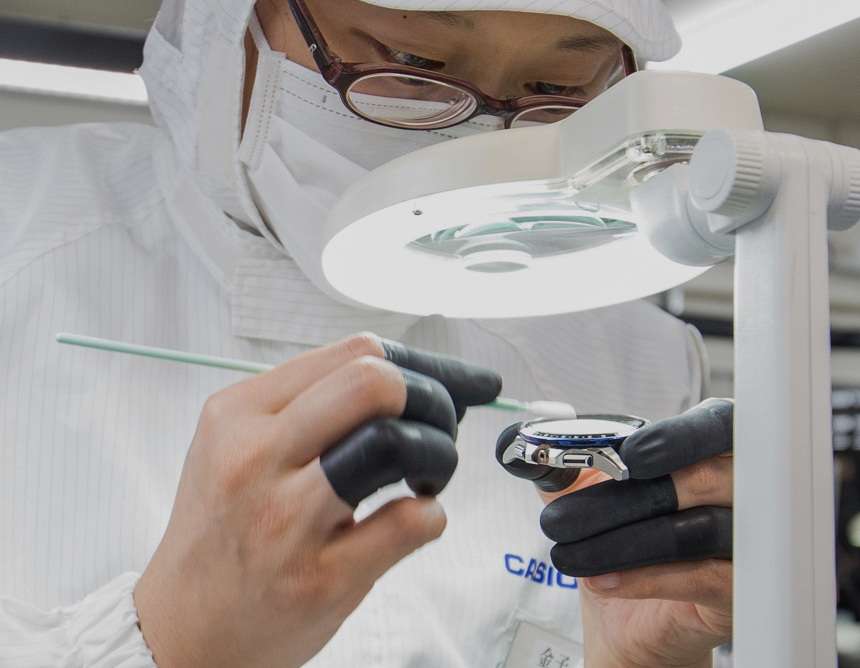
Many people don’t realize that a full Casio G-Shock watch takes a total of 2-3 months to produce when taking into consideration all the parts that need to be made. Assembly of each watch takes about 3-4 days, and then each is tested for another 5-7 days. What is tested? Each individual watch produced at Casio Yamagata is water pressure tested and “aged” for several days in both a very hot room and a very cold room. Accuracy is something which is tested previously during the assembly of the movements, which of course also happens in-house. The vast majority of Casio watch production – like the other Japanese watch makers – is highly vertically integrated. Often in ways the Swiss brands that boast “in-house” cannot match.
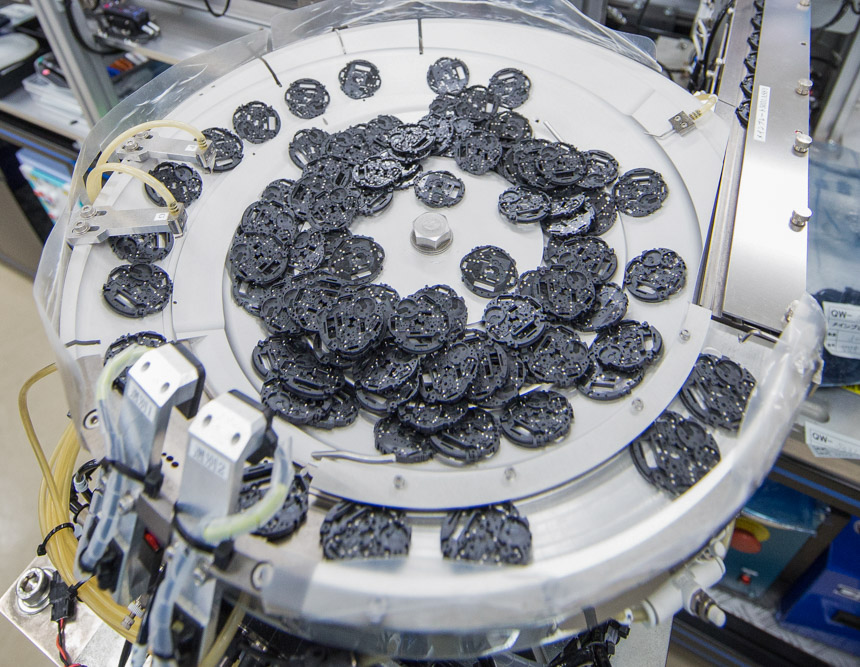
Casio is only now really trying to broadcast more of these messages that would probably make a lot of people look at the brand in a more prestigious light. For years, the Swiss luxury watch industry was a master of marketing while the Japanese were the true masters of innovation. With that said, I’ll give you an example of a favorite part of the Yamagata factory, a room where hands are perfectly aligned.
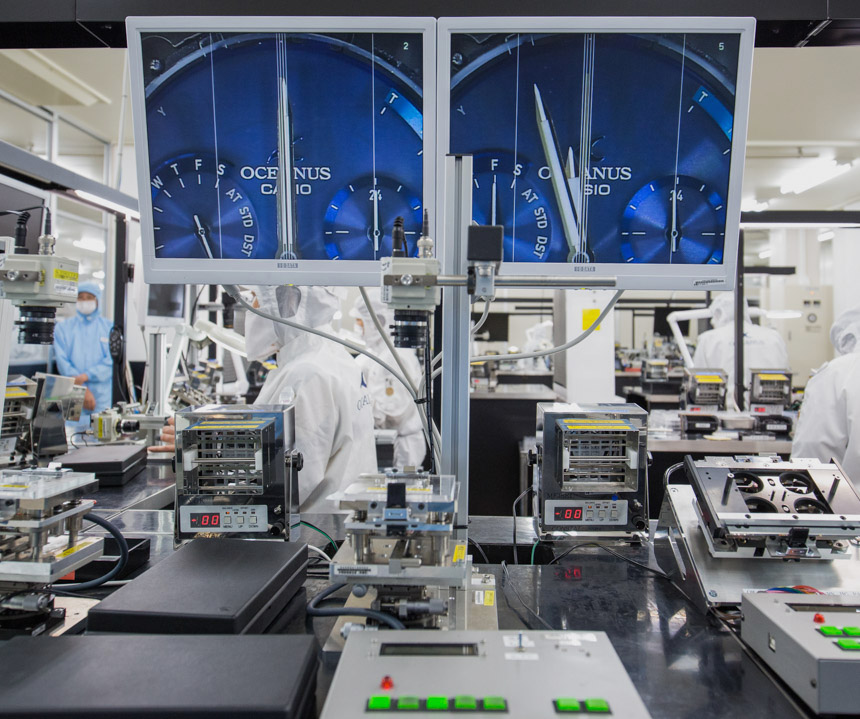
The room has two “G”-shaped production lines – that is, they literally form the letter G. The purpose of these production lines is to set the hands on the dial and then to clean and finally case the watches. First of all, the people working here are Casio’s “Medalists.” For some reason, the brand doesn’t call the people here watch makers. I get that, but they aren’t any less skilled nor do they have any less craftsmanship or technical mastery. There are various levels of these Medalists, and they need both experience and to pass internal exams. There are Gold and Platinum-level Medalists and the top honor goes to “Meisters,” which have been working for at least a decade or so and have continually proven their skills.
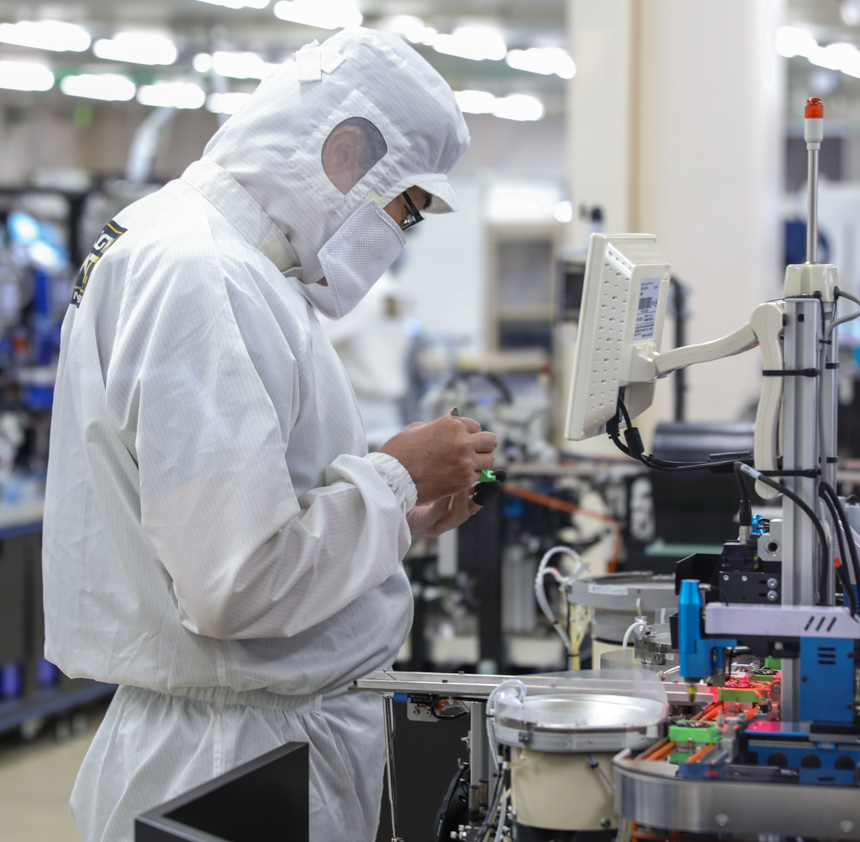
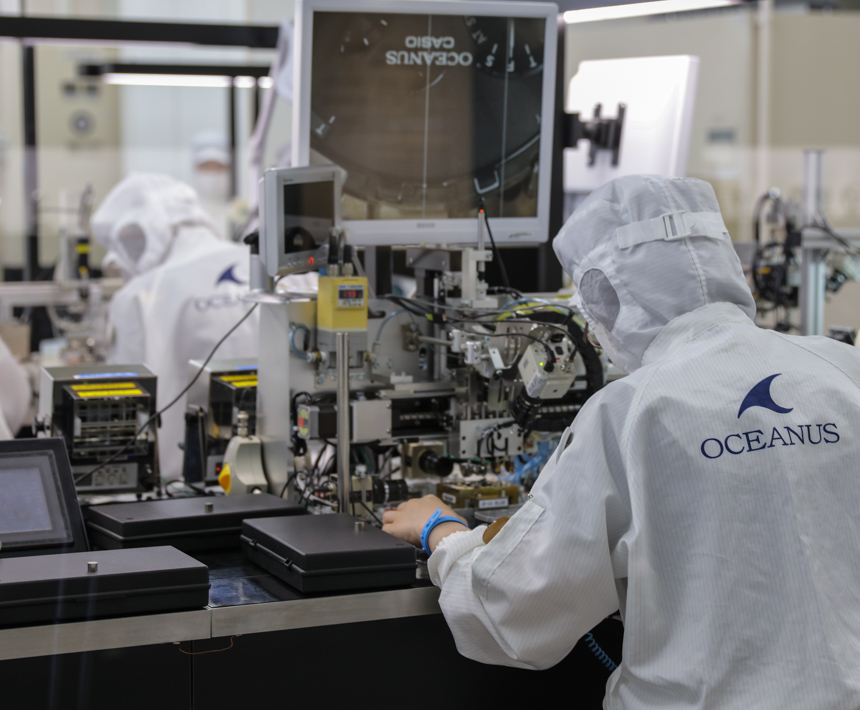
Anyhow, these top-level production employees at Casio populate the PPL spots working in tandem with automated machines to efficiently produce high-end, cool gadget watches. The hand-setting “G” lines are a bit different in that they are much more traditional without having automated belts for the watches. This line begins with a series of processes designed to set analog hands on watches like the Oceanus, MR-G, MT-G, and some other high-end G-Shock models. Hands are manually set using specialized tools and precision cameras allow the operator to carefully check that the position of the hands are perfect. Further, the hands are operated to ensure that they remain perfect as they move. This isn’t just how high-end Swiss watches do it, but Casio takes it a step further. The placement and positioning of the hands must be absolutely perfect, and a healthy amount of time is spent on each individual watch.
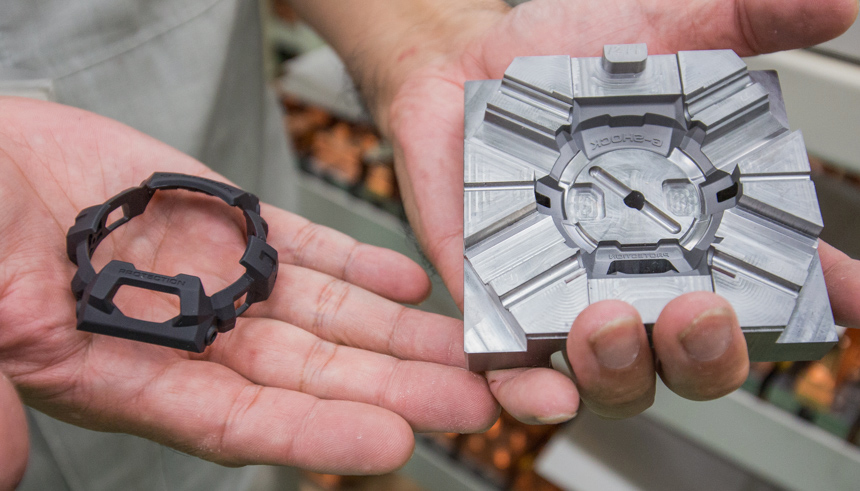
Since the dial of the watch was just finished at this step, it makes sense to then immediately protect it by casing the watch. One of the processes involved in casing the watch is to actually put the case in an oven after the dial and movement are inside. This is done before the case-back is attached and is designed to “cook out” any moisture that might lead to fogging/condensation. Casio isn’t making traditional watches, but if you really compare what they are doing (along with their Japanese colleagues) their quality assurance processes are superior to those employed by most European luxury watch makers.
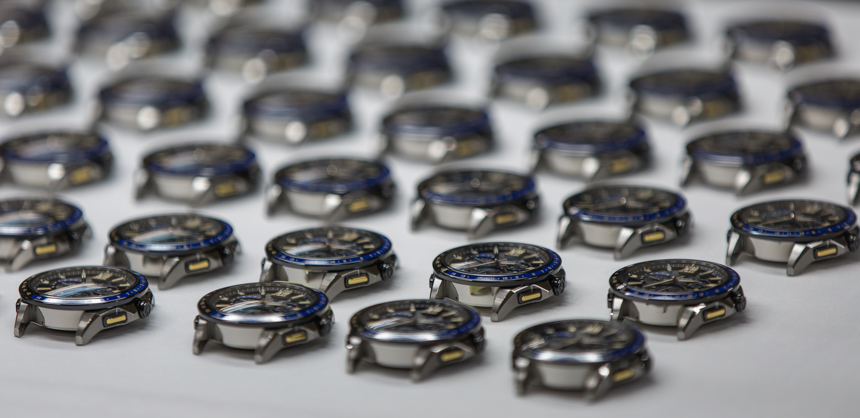
I particularly like this process because far too often even high-end quartz movements have hands that aren’t aligned properly and that don’t rest exactly where they should when ticking. Casio is fanatical about quality, toughness, and improving their products and processes, and it really shows. I love those values, and it makes my appreciation for the watches so much higher… especially at what are still very affordable price points for the majority of their products.
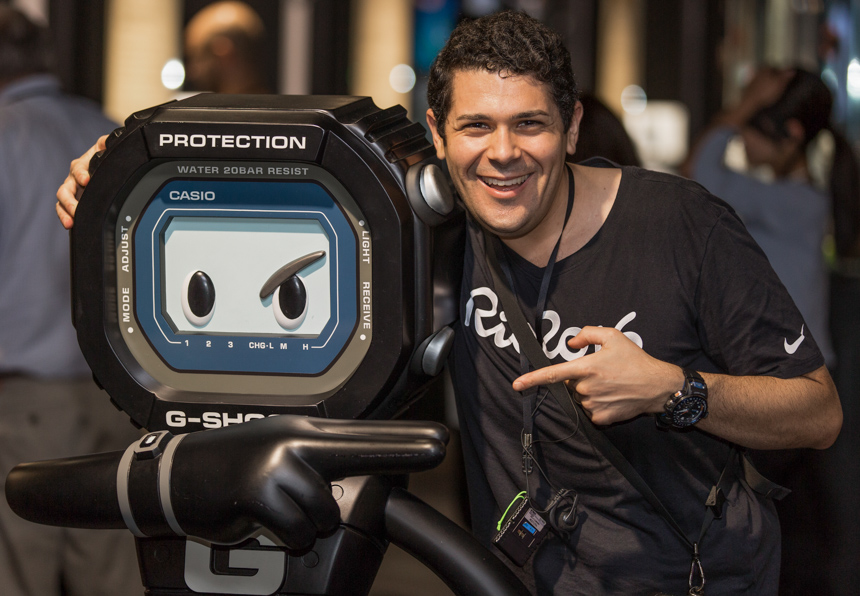
Growing Up Casio
Casio probably understands the unique position it is in as a watchmaker today when it comes to being an important part of many people’s formative years. My own experience as a Casio consumer is a common story in that – due to price and practicality – the first watch I was given as a child was a Casio. Moreover, I continued to wear a stream of Casio watches until I was done with high school. I was deeply aware of the design and functionality of the watches I was wearing, and as far as my parents were concerned, the relatively cheap prices of each watch meant that buying a new one each few years wasn’t that big of a deal. Thus, it was an interest of mine that they freely entertained because it was cost effective. That really isn’t the case when it comes to most Swiss or otherwise traditional watches.
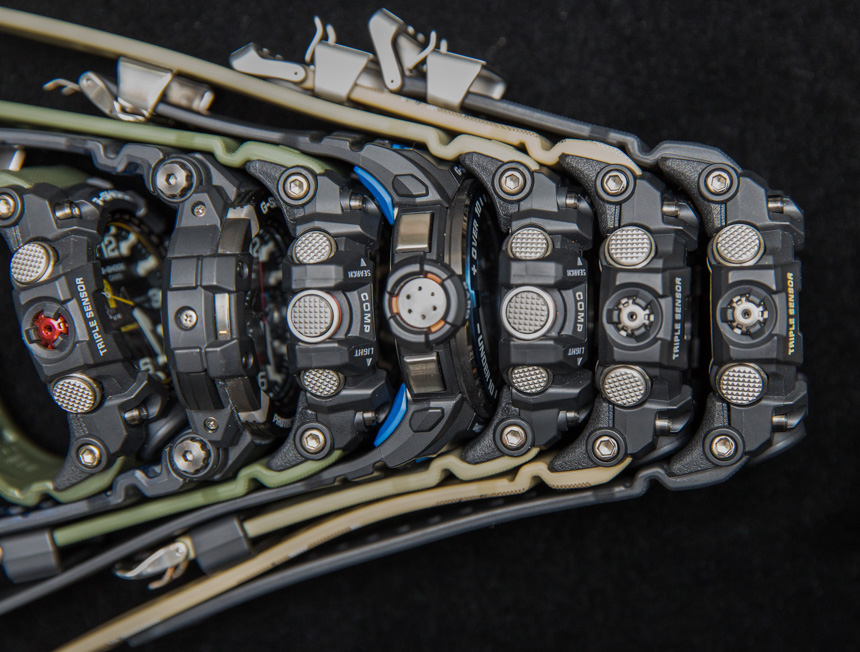
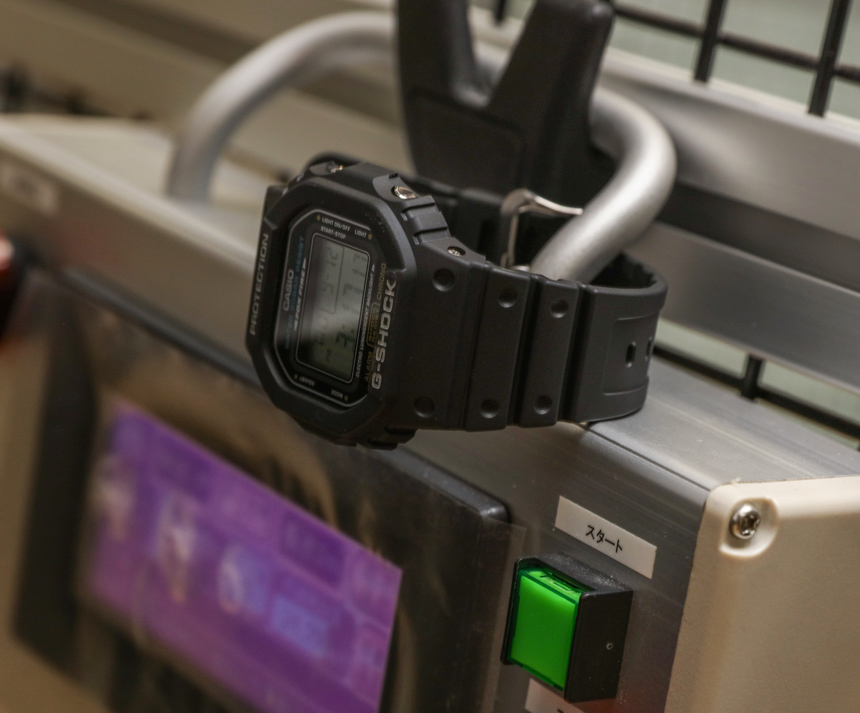
Parents are for the most part totally OK getting their kids Casio watches not only because they aren’t expensive but also because they are not prone to breaking. This is a really important point because a lot of parents who otherwise want their kids to have “nice watches” will not buy them until the kids are old enough to be responsible. That isn’t really a factor in something like a G-Shock because it will put up with a kid’s style pretty much better than anything else – and they also happen to look cool.
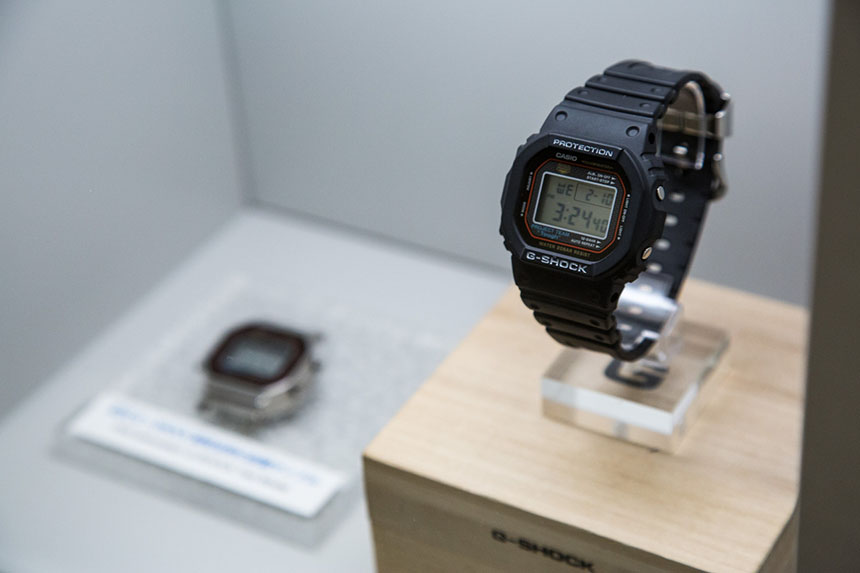
So what happened to the generation of kids starting in the early 1980s going until the early 2000’s who “grew up Casio?” That’s right, they became nostalgic brand loyalists as adults, and it is this for reason, in my opinion, that so many otherwise snobby watch lovers are not only quick to collect G-Shock watches themselves, but also appreciate them on other people’s wrist to the exclusion of most other budget watch brands.
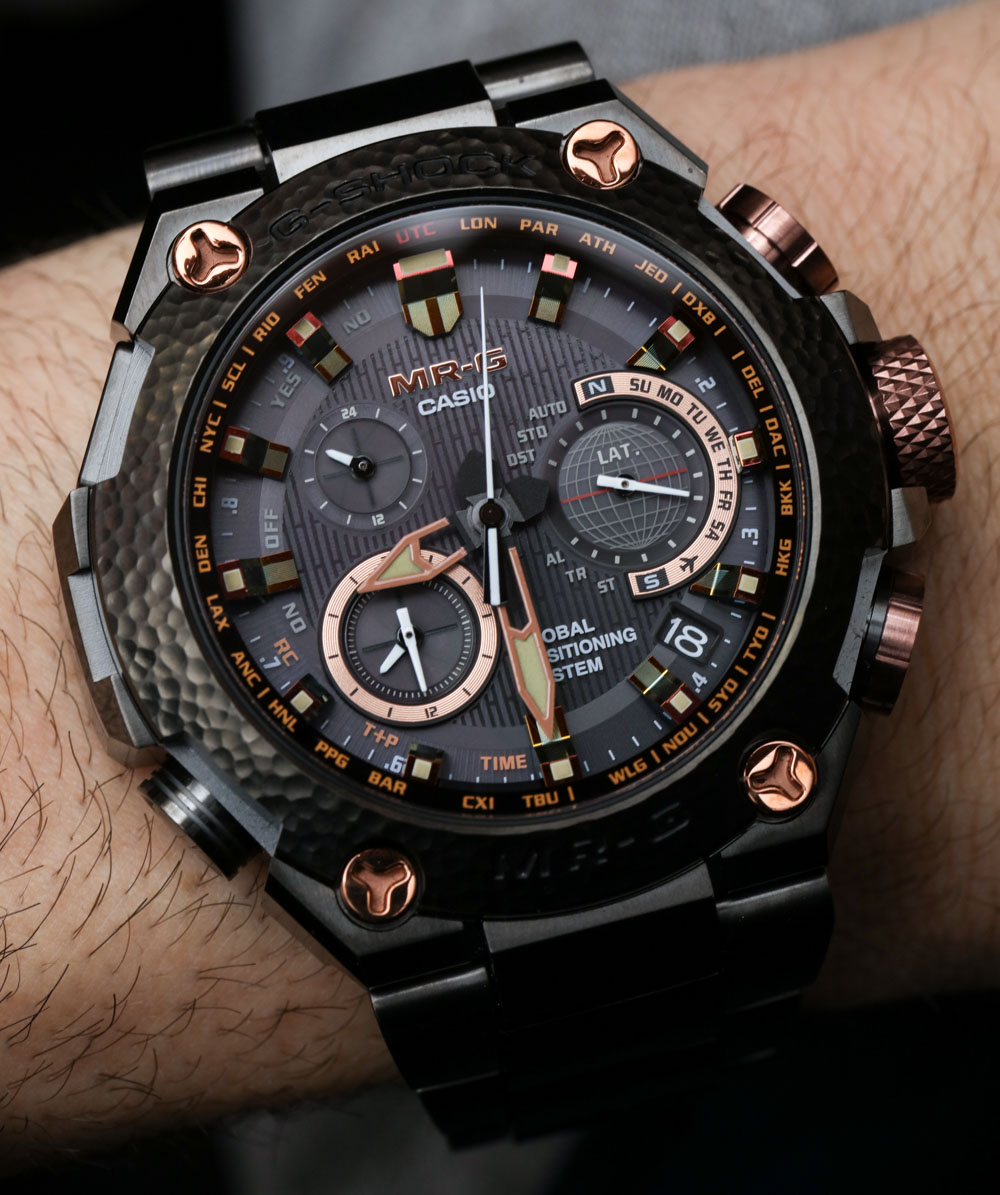
Thus, it is Casio’s current challenge to do two things. First, they need to ensure that they offer products appealing to today’s youth so that they can have an opportunity to grow up Casio as well. Second, Casio wants to serve the needs of all its now adult, former child watch wearers who want something that is as cool as the Casio watches they remember, but with enhanced design and quality of execution, functionality, and also style. This is one of the major reasons why the high-end MR-G and MT-G G-Shock collections persist, and it also explains the modern era of high-end G-Shock watches which include products now priced at over $6,000 (limited editions at that price… for now). Check out our hands-on with the $6,200 MR-G Hammer Tone here.

The Intelligent Analog Strategy Effect
One of the strangest things for me was seeing more and more Casio watches go from digital to analog. When it comes to legibility, functionality, precision, and convenience, digital screens are for the most part superior to traditional analog dials which use physical markers and hands versus dynamic screens. Why, then, are more and more high-end Casio G-Shock watches increasingly focused on analog displays? This includes both hybrid displays that include a combination of hands along with one or more LCD screens, as well as entirely analog dials which Casio has engineered to offer all or much of the same functionality that people have come to expect from the brand’s digital fare.
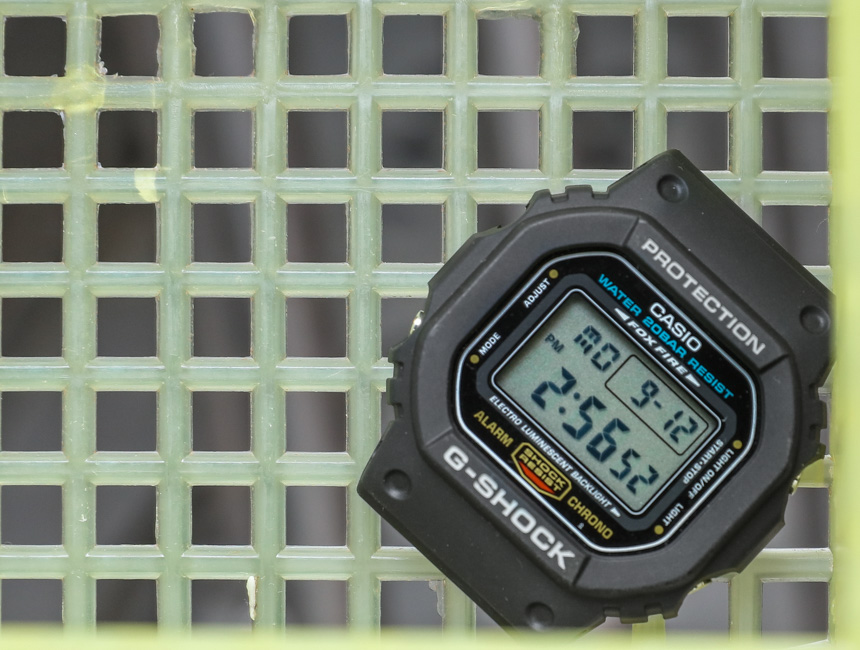
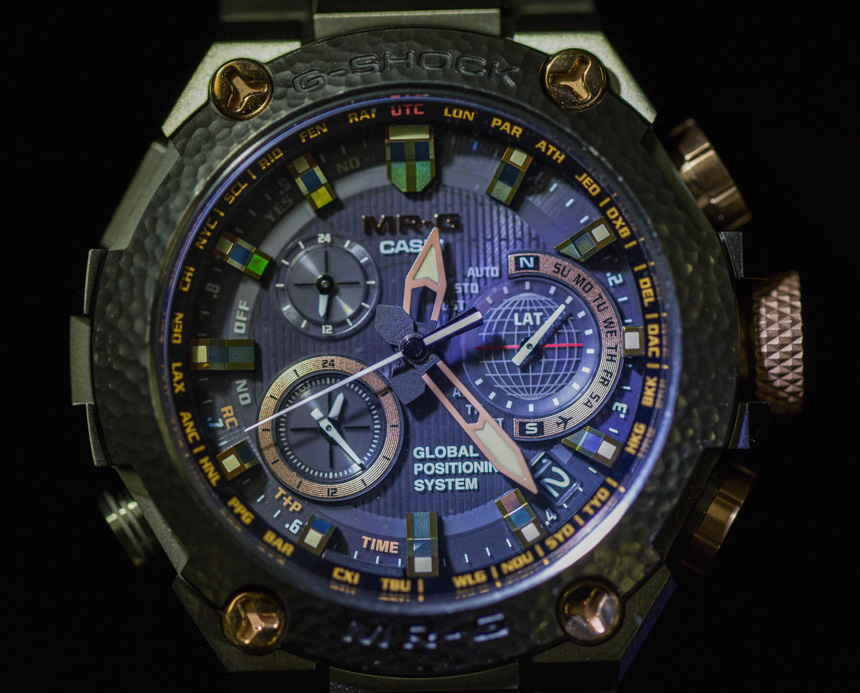
Some people have correctly pointed out that this is a sort of step backwards when it comes to functionality. That would be true, but I will remind those people that we don’t live in a world where people buy watches entirely for functionality anymore. The truth is that among adults analog-dialed watches sell better than those with purely digital faces. What is more, analog-dialed watches offer more personality than digital ones which can create a deeper emotional bond, leading to consumers having a greater desire to purchase those products. Remember, Casio’s marketing strategy with its high-end G-Shock collection is to appeal to that person who grew up Casio but who wants something cool that they can enjoy as an adult.
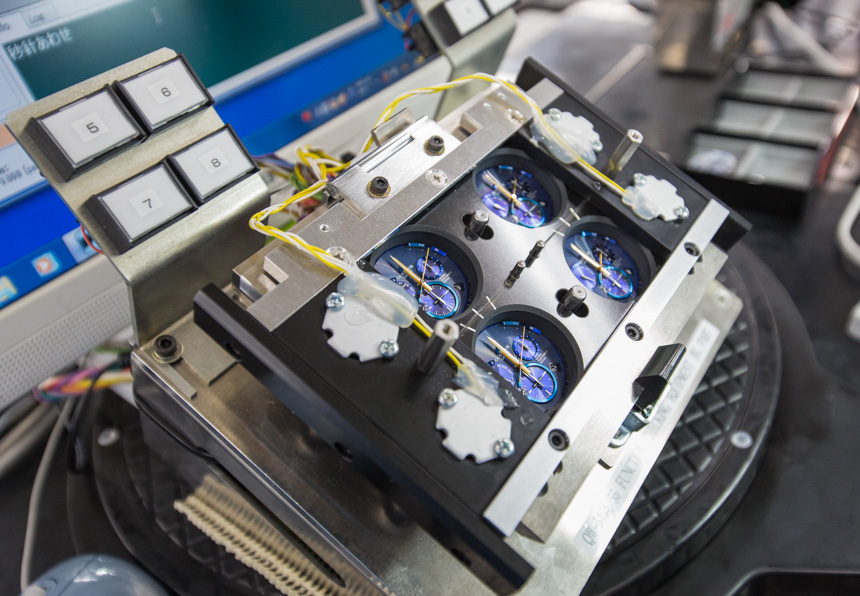
The name for this at Casio is called the “Intelligent Analog Watch Strategy,” and it is the idea that the company is engineering interesting and complicated ways to ensure that a G-Shock does everything a G-Shock should, but with an analog dial. I can’t stress enough the intense R&D budget that continues to go into this work. With digital screens, Casio didn’t have to worry about so much that they need to worry about with analog dials. This has resulted in them having engineering dials through which light can pass to reach the photovoltaic cell or hands that automatically realign to the proper position after the watch has been subject to an extreme shock, for example.
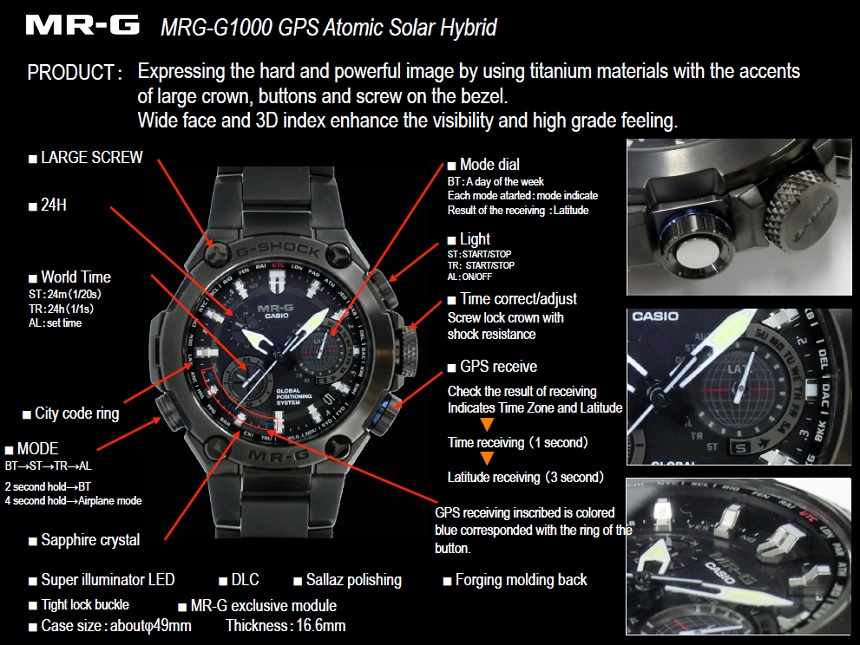
Complicated micro-motors and materials were designed to allow hands to move both quickly and attractively when performing functions other than telling the time; Useful low-energy consumption systems that provide light to read the dial in the dark; A “smart access” crown is meant to allow for a variety of functions using the crown in a way similar to that of a traditional watch while also being highly durable. This list could go on, but all of this time and investment is exclusively due to the fact that Casio wanted analog watch dials to do more or less the same things as digital watch dials. If anything, it makes a great story and it offers a staggering amount of variety for consumers.
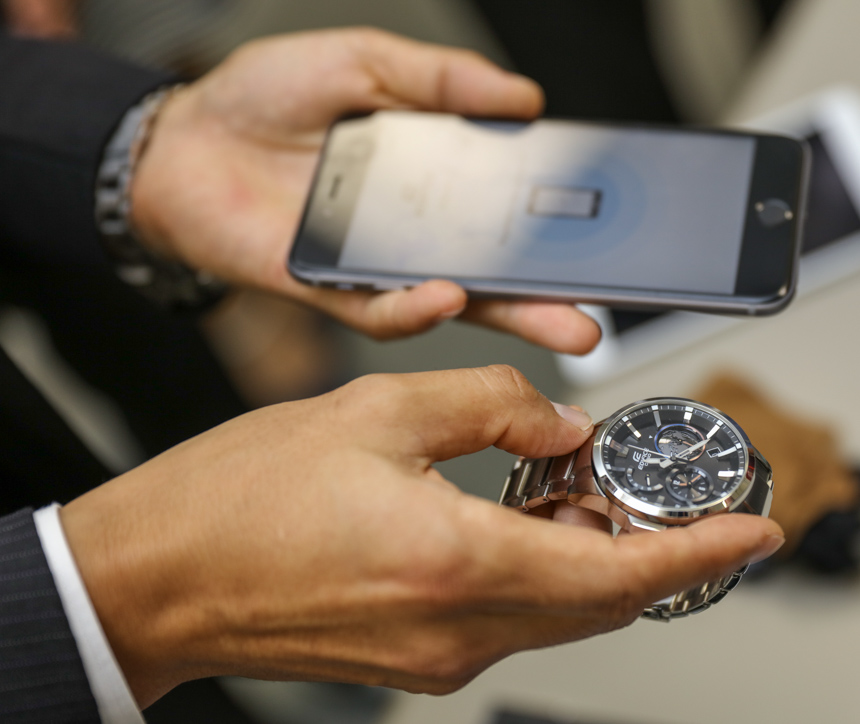
The effect of the Intelligent Analog Watch Strategy for both Casio and consumers has been interesting. The corporate mandate that high-end G-Shock watches be analog spurred a sort of high-design renaissance, in my opinion, at Casio. This culminated in other advances and spending that found its way into many other elements of the watch from the complexity of the case to the functionality of the movement. Casio is intent on pushing its promise of consumer convenience as much as possible into the future. The latest trend has been to integrate GPS time synching functionality into more and more watches.
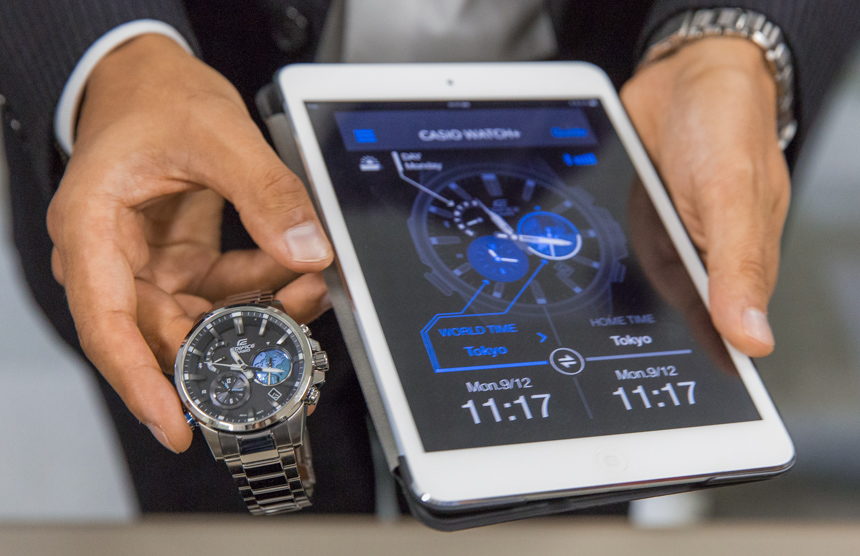
In the future, Casio hopes that as a more cost-effective solution it will be able to connect all of its watches directly to the Internet. This would be a step above the current atomic clock radio signal technology which works well in Japan, but has limited utility in many other parts of the world. For now, Casio is experimenting with Bluetooth technology, but it admits this is a short-term solution. Eventually, it wants to experiment with LTE and other mobile data broadcasting in its watches so that they can always be accurate, anywhere in the world, and still enjoy the G-Shock’s legendary level of being “worry-free.”
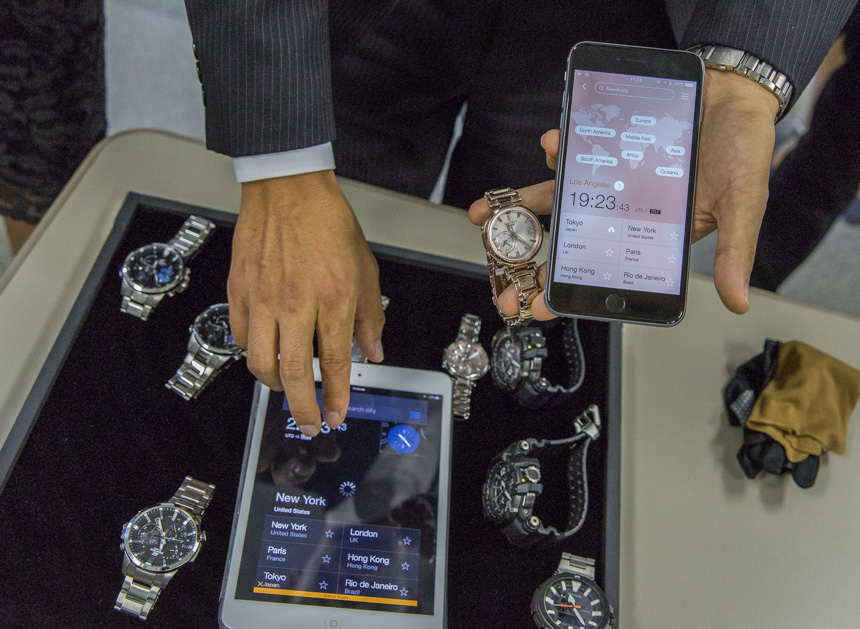
The insistence that many Casio G-Shock family watches appeal to a more adult demographic continues to prove interesting for Casio watch design. Yes, it is true that these are no longer watches cheap enough for kids to grow up with, but Casio hasn’t abandoned that part of the business. In true Japanese consumer product form, Casio wants to have attractive products for a variety consumer types. The major challenge will continue to be competition from other brands, as well as emerging technology products such as smartwatches – which is a segment that Casio has already entered as well. See our review of Casio’s latest WSD-F10 smart watch here.

